
Which golf club to use?
Which golf club to use?
A Comprehensive Guide on Which Golf Club to Use
Embarking on your golf journey? Understanding the purpose of each golf club is fundamental for success on the course. In this detailed guide, we’ll delve into the intricacies of different golf clubs, their designs, and when to strategically use them. Welcome to Golf For Beginners Academy’s exploration of “Which golf club to use?”
The Mighty Driver
The driver, a club designed for maximum distance, plays a pivotal role in setting the stage for a successful hole.
Purpose of the Driver: The driver is primarily used for tee shots on par-4s and par-5s, providing the maximum distance off the tee.
Clubhead Design: Recognizable by its oversized clubhead, the driver’s large sweet spot enhances forgiveness, allowing for more distance even on off-center hits.
When to Use: Opt for the driver on long and open holes where distance is crucial. Tee shots on par-4s and par-5s are ideal scenarios for unleashing the power of the driver.
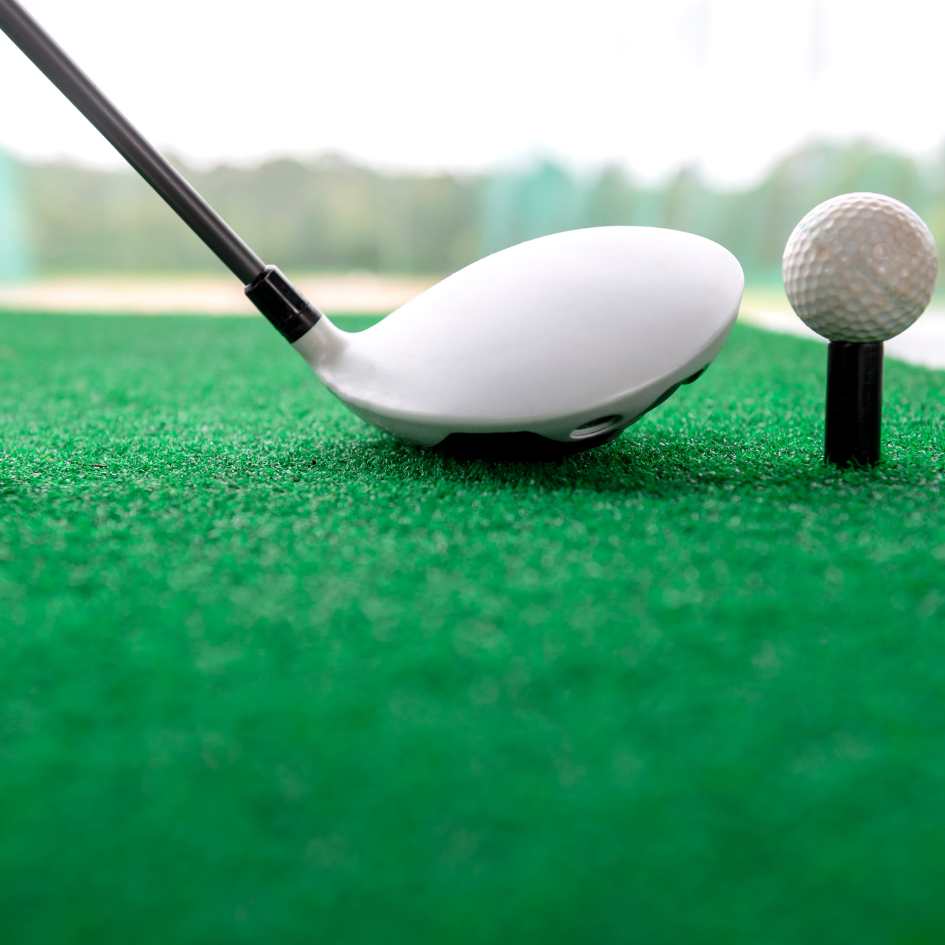
Navigating Fairway-Woods
Fairway-woods serve as versatile clubs designed for both distance and control, offering alternatives to the driver

Purpose of Fairway-Woods: Fairway-woods are designed for long shots from the fairway, providing a balance between distance and accuracy.
Clubhead Design: With a shallower profile than the driver, fairway-woods have a lower center of gravity, promoting a higher launch trajectory.
When to Use: Opt for fairway-woods when faced with long shots from the fairway, or when needing to navigate through challenging fairway or rough terrain.
The Versatility of Hybrids
Hybrids blend the characteristics of irons and fairway-woods, offering forgiveness and ease of use.
Purpose of Hybrids: Hybrids are versatile clubs designed to replace difficult-to-hit long irons. They provide a combination of distance, accuracy, and playability.
Clubhead Design: With a design resembling both irons and fairway-woods, hybrids typically feature a larger clubhead and a lower center of gravity.
When to Use: Utilize hybrids in situations where a balance of distance and control is required, especially in scenarios where long irons might pose challenges.

The Backbone of the Bag - Irons
Irons, numbered from 3 to 9, are designed to cover a range of distances and play a crucial role in approaching the green.

Purpose of Irons: Irons are used for approach shots, providing precision and control to land the ball on the green.
Clubhead Design: Irons have a thinner profile compared to woods, with clubheads featuring varying degrees of loft for different distances.
When to Use: Choose irons based on the required distance for approach shots. Lower-numbered irons (3-5) are ideal for longer shots, while higher-numbered irons (6-9) are suitable for shorter approaches.
Wedges - Precision in Scoring
Wedges, including the pitching wedge, gap wedge, sand wedge, and lob wedge, are specialized for short-distance shots around the green.
Purpose of Wedges: Wedges are designed for precise control over short shots, including pitches, chips, and bunker play.
Clubhead Design: Wedges have a high loft, allowing for a steeper angle of descent and greater spin control.
When to Use: Employ wedges for shots within 120 yards of the green, as well as when faced with challenging lies, bunkers, or the need for precise control.

Putting - The Art of the Putter
The putter, the final touch in completing each hole, is designed for precision and control on the greens.
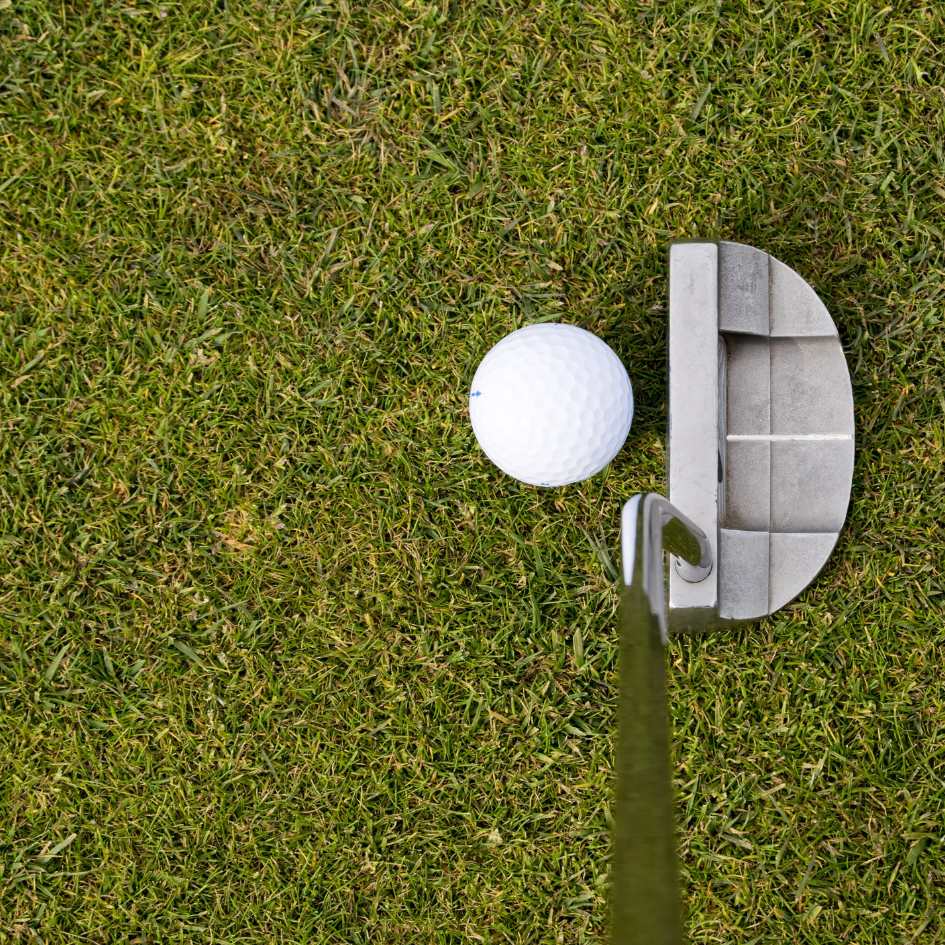
Purpose of the Putter: The putter is used on the green for short and controlled strokes to roll the ball into the cup.
Clubhead Design: Putters have a flat, low-profile clubhead with various designs to suit different putting preferences.
When to Use: Use the putter on the green to complete the hole. It is essential for precision in short-range putts.
Want to learn even more? Listen to our Podcast!⛳️
Ready to Take the Next Step? ⛳️
Are you eager to dive deeper into golf’s intriguing world and master the ins and outs of the game? Look no further than our “Golf For Beginners – The Ultimate Starter Guide.” Whether you’re a newbie or just brushing up on your skills, this online course has something for everyone.

Conclusion on Which golf club to use
Congratulations! You’ve navigated through our comprehensive guide on “Which golf club to use?” As you continue your golf journey, remember that each club in your bag has a specific purpose. Golf For Beginners Academy is here to support you every step of the way. Tailor your club selection to the demands of the course, refine your skills, and enjoy the versatility and precision each club brings to your game. Happy swinging!
Du you want more detailed help with you game of golf, and specifically about the short game of golf? Our partner-portal called World Of Short Game deliver great content for all short game related topics. Click here to visit World Of Short Game.
And if you live in Denmark, never hesitated to reach out to Danish Golf Academy for help with any part of your game.

Top 10 Golf Swing Tips for Beginners
Top 10 Golf Swing Tips for Beginners
Mastering the Basics of The Golf Swing with these 10 Best Beginners Tips
Embarking on your golf journey? Mastering the golf swing is a crucial aspect of improving your game. In this comprehensive guide, we’ll delve deeper into the top 10 golf swing tips tailored for beginners. Whether you’re stepping onto the course for the first time or refining your skills, these in-depth tips are designed to set you on the path to a more controlled and powerful golf swing. You can also find this article as a podcast episode in the bottom of the page 🙂
1. Hit the Ground After the Ball:
Ensure a proper ball-turf contact by focusing on hitting the ground slightly after striking the ball. This tip encourages a descending strike, allowing the clubhead to make clean contact with the ball before the turf. Practice this by focusing on a spot just beyond the ball during your setup, promoting a downward motion through impact.

2. Keep Your Weight Forward (probably the most important tips in the golf swing for beginners!)
Maintain a forward weight distribution throughout your swing. Start with approximately 55-60% of your weight on your lead foot at address. As you swing, resist the urge to shift your weight backward, especially during the downswing. This forward weight position helps ensure a solid foundation, enhances ball-turf contact, and maximizes the power generated through impact.

3. Do Not Move Your Head:
Keep your head steady throughout the swing to maintain balance and consistency. A stable head serves as an anchor, allowing for better control of your body’s movements. Focus on a fixed point on the ground, such as the back of the ball, and avoid excessive lateral or vertical head movements during the swing.
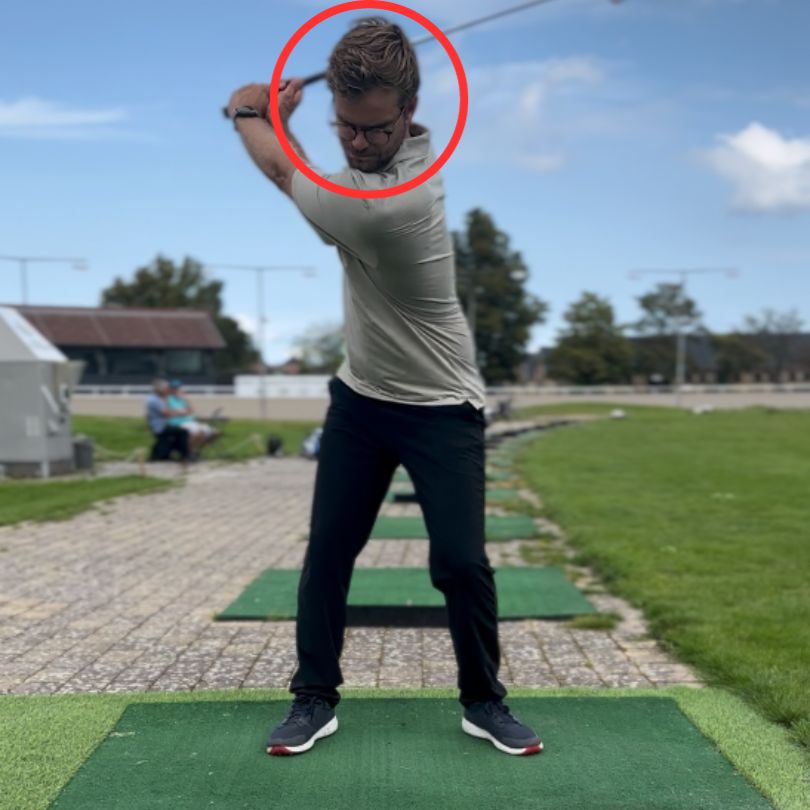
4. Keep Left Arm Straight
Maintain a straight left arm during your backswing to promote a wider swing arc. This extension increases the potential for generating power and enhances accuracy. Practice the feeling of keeping your left arm straight during the backswing by incorporating drills that emphasize arm extension and width.

5. Turn Your Hips in the Backswing
Initiate your backswing by turning your hips to set the stage for a full and powerful swing. The hip rotation not only helps create torque but also contributes to a proper weight transfer. Focus on initiating the hip turn early in the backswing to optimize your body’s coil and improve overall swing dynamics.
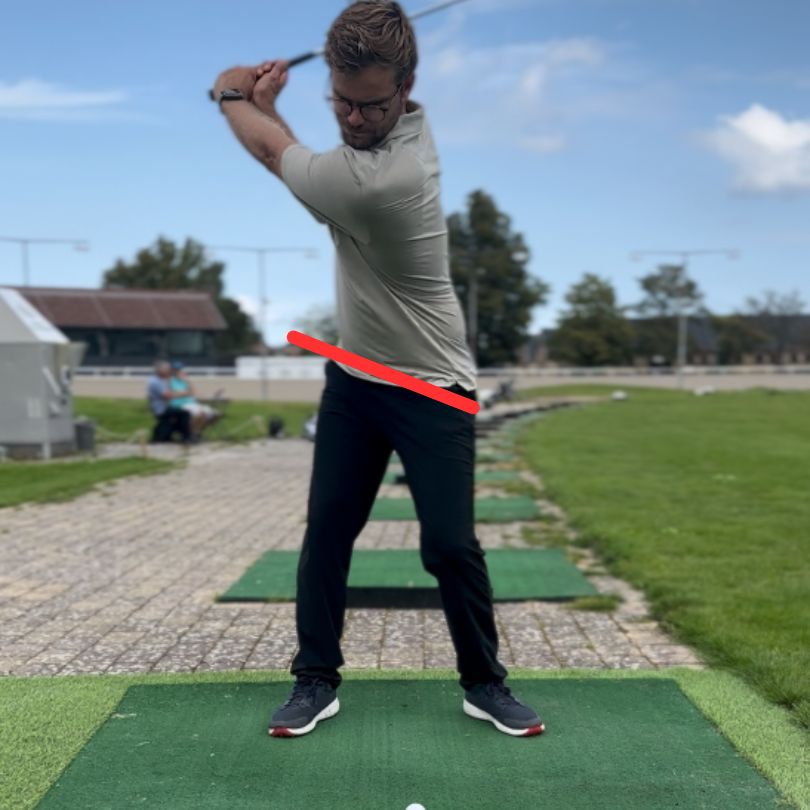
6. Rotate Upper Body with Shoulders Turning Down
To keep your head still, rotate your upper body with shoulders turning down during the backswing. This movement helps maintain a consistent swing plane, preventing the common mistake of lifting the club too steeply. Visualize your upper body rotating around your spine while the shoulders turn downward, creating a more controlled and efficient swing.
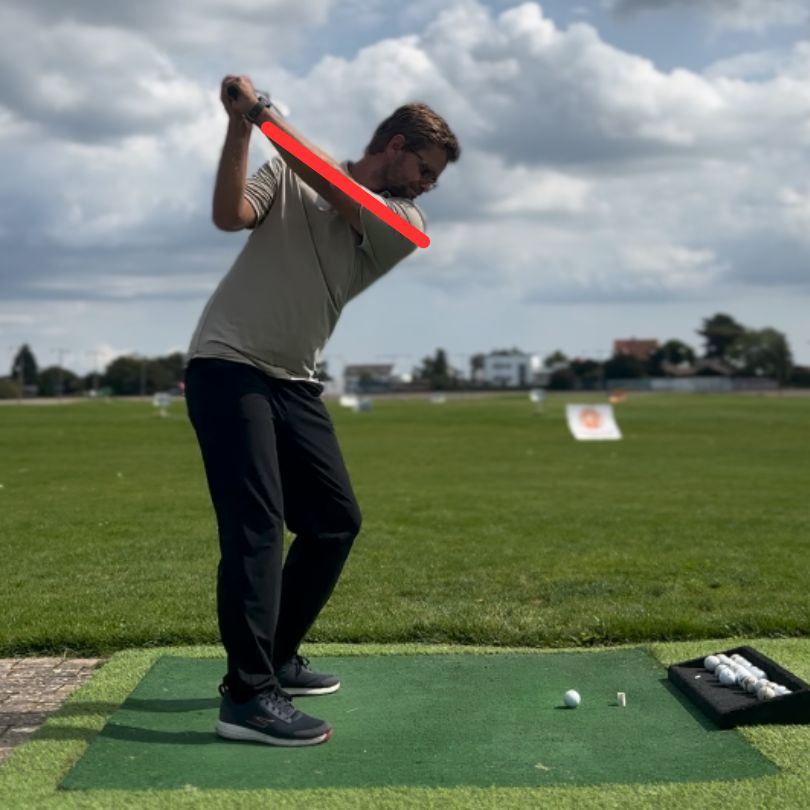
7. Tuck Your Hips in the Follow-Through:
Achieve a balanced and controlled follow-through by tucking your hips. This movement ensures a smooth transition from the downswing to the finish. Practice tucking your hips as you shift your weight onto the lead foot, allowing for a graceful and well-balanced conclusion to your swing.
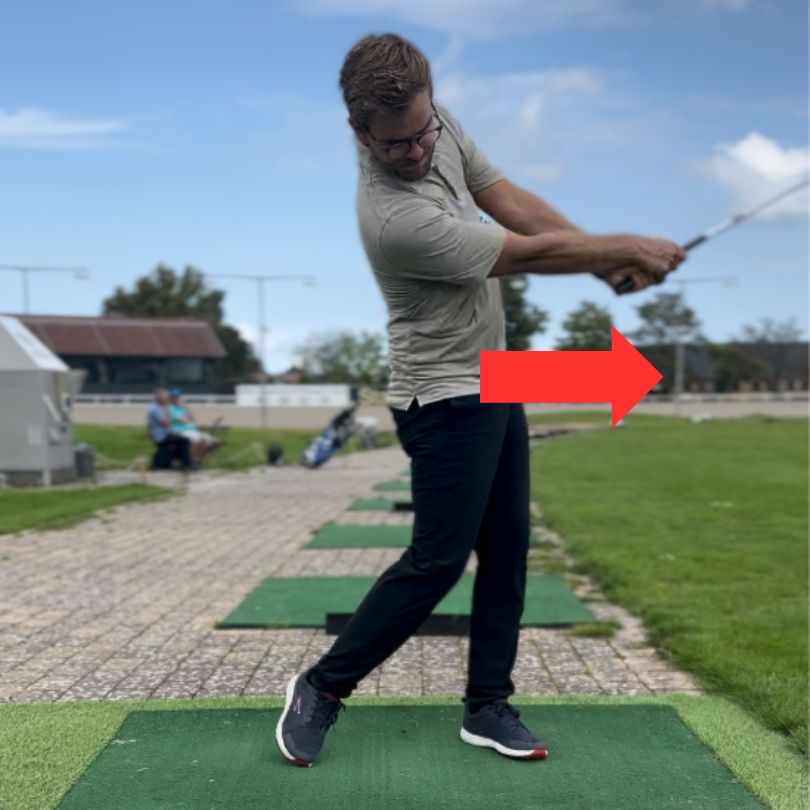
8. Swing Your Hands Around Your Body in a Circle, Not Up:
Optimize your swing path by visualizing a circular motion for your hands, rather than lifting them excessively. This lateral hand movement promotes a more natural and effective swing plane. Imagine your hands tracing a circular path around your body, fostering a smoother and more efficient swing.
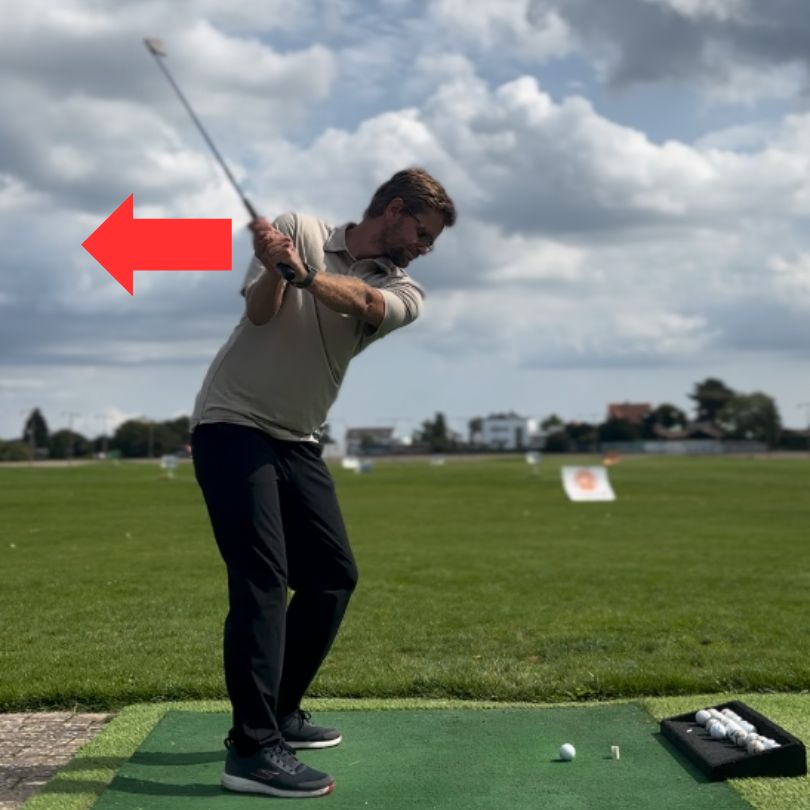
9. Keep Both Arms Straight After You've Hit the Ball:
Maintain the extension of both arms post-impact to ensure a consistent follow-through. This extension contributes to overall swing control and helps prevent premature deceleration. Practice extending both arms toward the target after striking the ball, creating a polished and controlled finish.
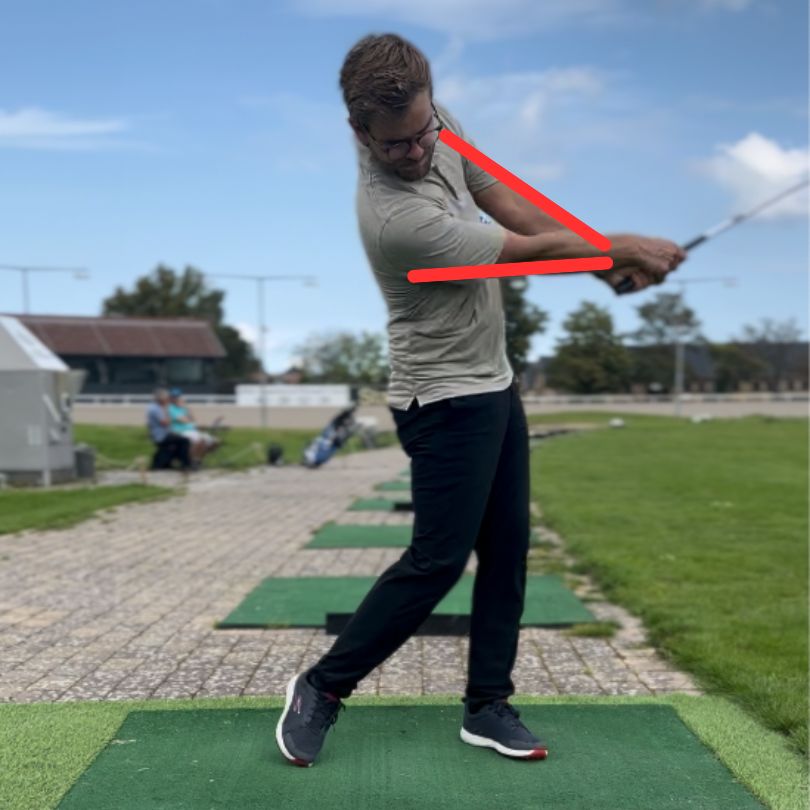
10. Extend Body in Finish Position:
Complete your swing with a full extension of your body for a balanced and poised finish. A well-executed finish position reflects control and commitment to the swing. Focus on extending your body toward the target, ensuring that your weight is predominantly on the lead foot and your chest faces the intended target. This extension enhances the overall aesthetics of your swing and reinforces proper mechanics.
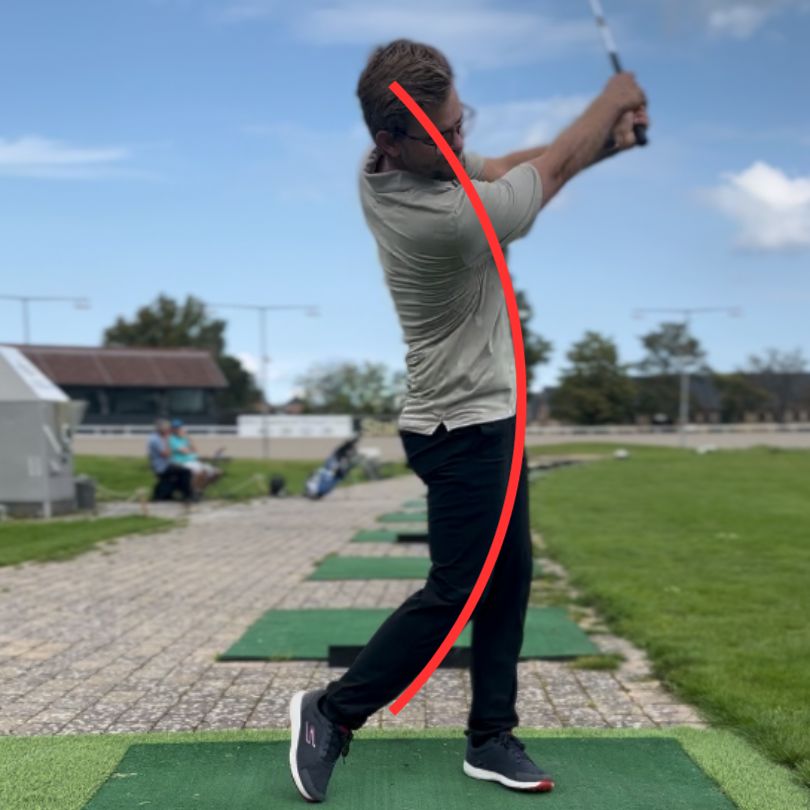
Want to listen to this article via Podcast? 
Ready to Take the Next Step? ⛳️
If you’re eager to dive deeper into golf’s intriguing world and master the ins and outs of the game, look no further than our “Golf For Beginners – The Ultimate Starter Guide.” Whether you’re a newbie or just brushing up on your skills, this online course has something for everyone.
⛳️ Discover the Ultimate Golf Starter Guide Right Here ⛳️
Conclusion: Elevate Your Golf Swing as a Beginner
Congratulations! You’ve explored in-depth the top 10 golf swing tips for beginners. Remember, consistency is key in mastering the golf swing. Golf For Beginners Academy is here to support you on your journey to becoming a confident and skilled golfer. Delve into these tips, pay attention to the finer details, and enjoy the improvement in your swing. Happy golfing!
Did you like the "Golf Swing Tips for Beginners"
If you want more detailed help with you game of golf, and specifically about the short game of golf, our partner-portal called World Of Short Game deliver great content for all short game related topics. Click here to visit World Of Short Game.
And if you live in Denmark, never hesitated to reach out to Danish Golf Academy for help with any part of your game.
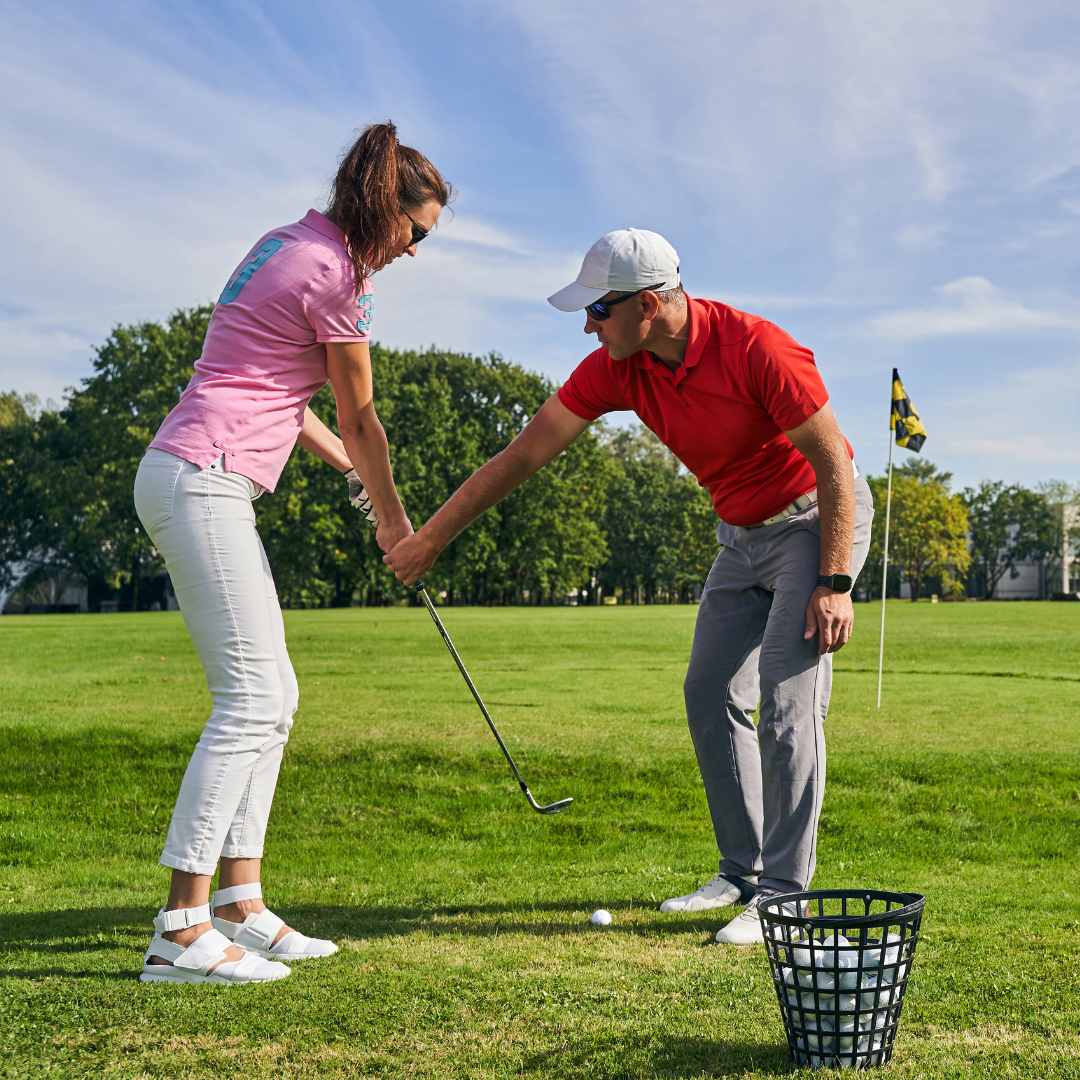
25 Best Golf Tips for Beginners
25 Best Golf Tips for Beginners
Mastering the Greens: In-Depth Best Golf Tips for Beginners
Embarking on your golfing journey? Golf For Beginners Academy has you covered with a detailed guide featuring essential tips tailored for novice players. Let’s dive into each section for a comprehensive understanding of golf tips for beginners.
The Fundamentals of Golf - Section 1
Proper Grip and Stance: Achieve a strong foundation by mastering your grip and stance. A neutral grip and balanced stance provide stability, ensuring a controlled and powerful swing.
Understanding Club Selection: Learn the basics of club selection based on the distance and shot requirements. Familiarize yourself with the different types of clubs and their specific uses.
Swing Basics: Focus on a fluid and balanced swing. Practice your backswing, downswing, and follow-through to create a consistent and efficient motion that improves accuracy.
Ball Positioning: Understand the importance of proper ball positioning for different shots. Master the alignment of the ball in your stance to optimize trajectory and contact.
Developing a Pre-Shot Routine: Establish a pre-shot routine to enhance your focus and consistency. This routine can include visualizing your shot, checking alignment, and taking a few practice swings.
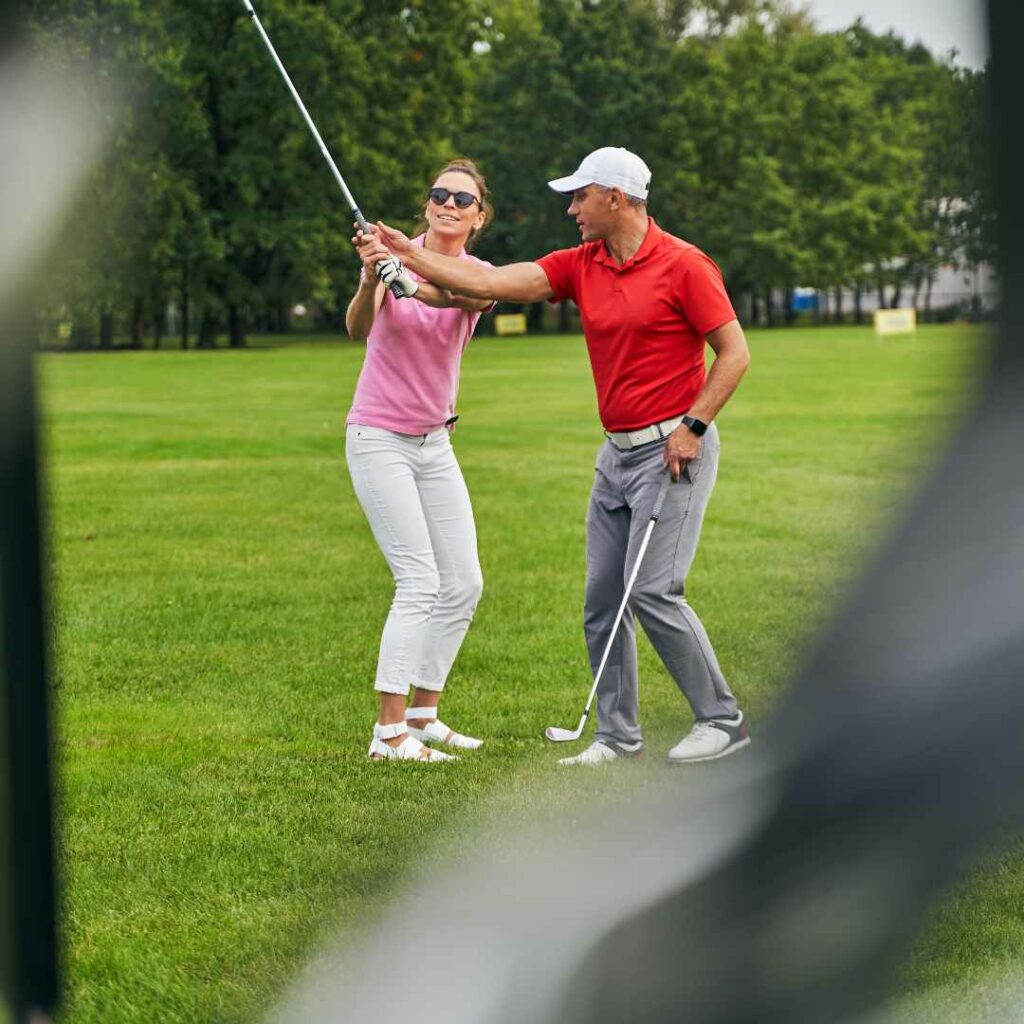
Want to learn more about the swing?
Listen to our podcast!
Mastering the Short Game - Section 2
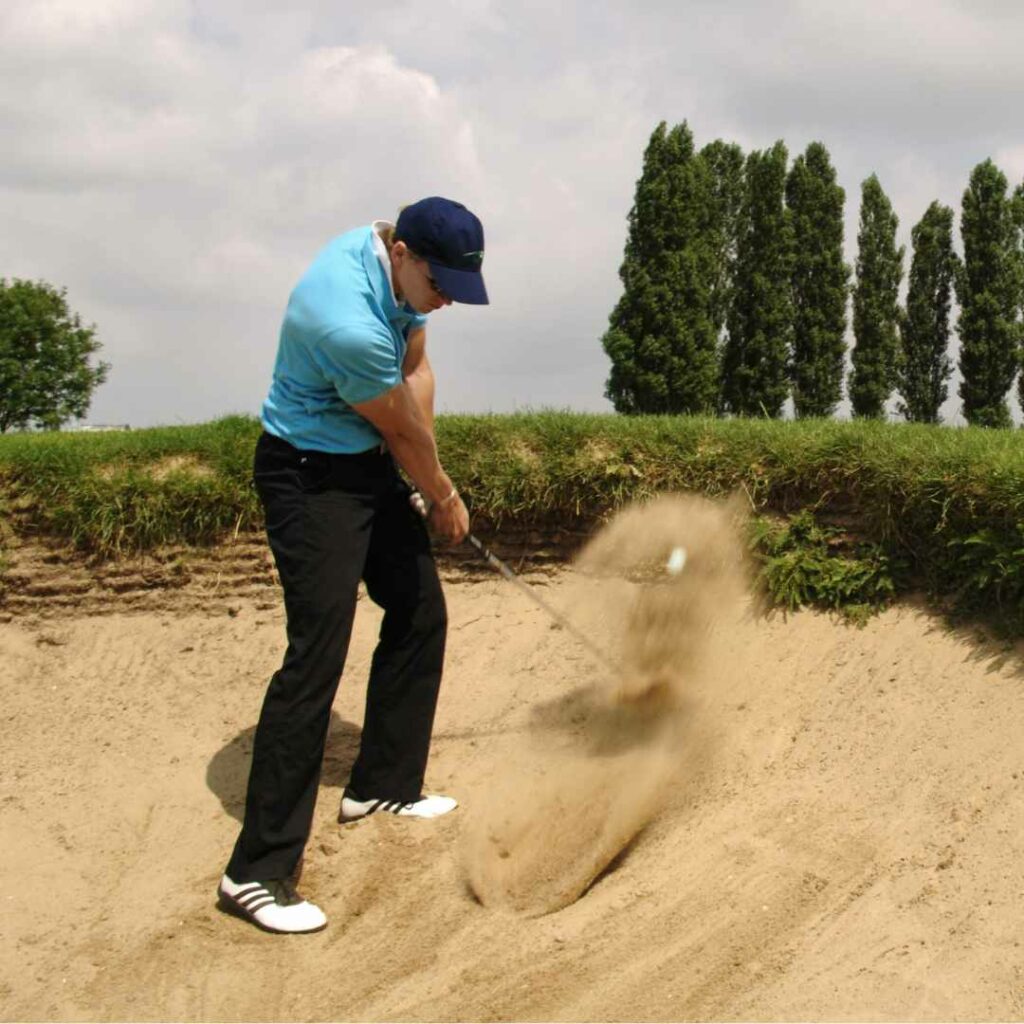
Putting Precision: Hone your putting skills by focusing on distance control, alignment, and a smooth stroke. The short game is often where strokes can be saved or lost.
Chipping Techniques: Practice various chipping techniques for shots around the green. Learn how to control trajectory and spin to get the ball close to the hole.
Pitching Perfection: Develop your pitching skills for shots that require more loft. Mastering the pitch shot is crucial for navigating obstacles and landing the ball softly on the green.
Bunker Play: Understand the fundamentals of bunker play, including the proper setup, swing, and strategy for getting out of sand traps efficiently.
Reading Greens: Improve your ability to read greens by understanding the slope, grain, and nuances of the putting surface. Accurate green reading is key to successful putting.
Course Management Strategies - Section 3
Playing Within Your Abilities: Recognize your skill level and play within your abilities. Avoid unnecessary risks and focus on making consistent shots to improve overall performance.
Strategic Club Choices: Develop a strategic approach to club selection based on the layout of the course. Choose clubs that allow you to navigate hazards and position yourself for the next shot.
Understanding Par: Familiarize yourself with the concept of par and set realistic expectations. Aim to play within or slightly above par, focusing on steady improvement.
Pace of Play: Respect the pace of play on the course. Be mindful of your group’s speed, maintain a reasonable pace, and be ready for your turn to keep the game enjoyable for everyone.
Course Awareness: Stay aware of the course layout and potential challenges. Knowing where hazards, bunkers, and doglegs are located helps you plan and execute more successful shots.

Mental Game and Focus - Section 4

Maintaining a Positive Mindset: Cultivate a positive attitude on the course. Overcome challenges with resilience, focusing on learning from each shot rather than dwelling on mistakes.
Visualization Techniques: Harness the power of visualization to enhance your performance. Picture successful shots in your mind before executing them to boost confidence.
Breathing and Relaxation: Incorporate deep breathing and relaxation techniques to stay calm under pressure. Managing stress enhances your ability to make clear decisions on the course.
Handling Setbacks: Learn to bounce back from setbacks and mistakes. Resilience is a crucial trait in golf, and the ability to recover from a bad shot is essential for long-term success.
Staying Present on the Course: Practice staying in the moment during your round. Avoid dwelling on past shots or worrying about future ones. Focus on the task at hand to improve overall performance.
Continuous Improvement and Resources - Section 5
Effective Practice Habits: Maximize your practice sessions with focused drills and exercises. Target specific areas of your game that need improvement and track your progress over time.
Golf Lessons and Professional Guidance: Consider taking golf lessons from a certified instructor. Professional guidance helps identify areas for improvement and provides personalized feedback.
Utilizing Technology: Leverage golf technology, such as swing analysis apps and launch monitors, to gain insights into your swing mechanics and track performance metrics.
Joining a Golf Community: Connect with other golf enthusiasts by joining a local golf community or club. Networking with fellow players provides opportunities for friendly competition and shared learning.
Staying Informed: Stay informed about the latest trends, techniques, and equipment in the golfing world. Subscribe to golf publications, follow reputable online resources, and attend golf expos for continuous learning.
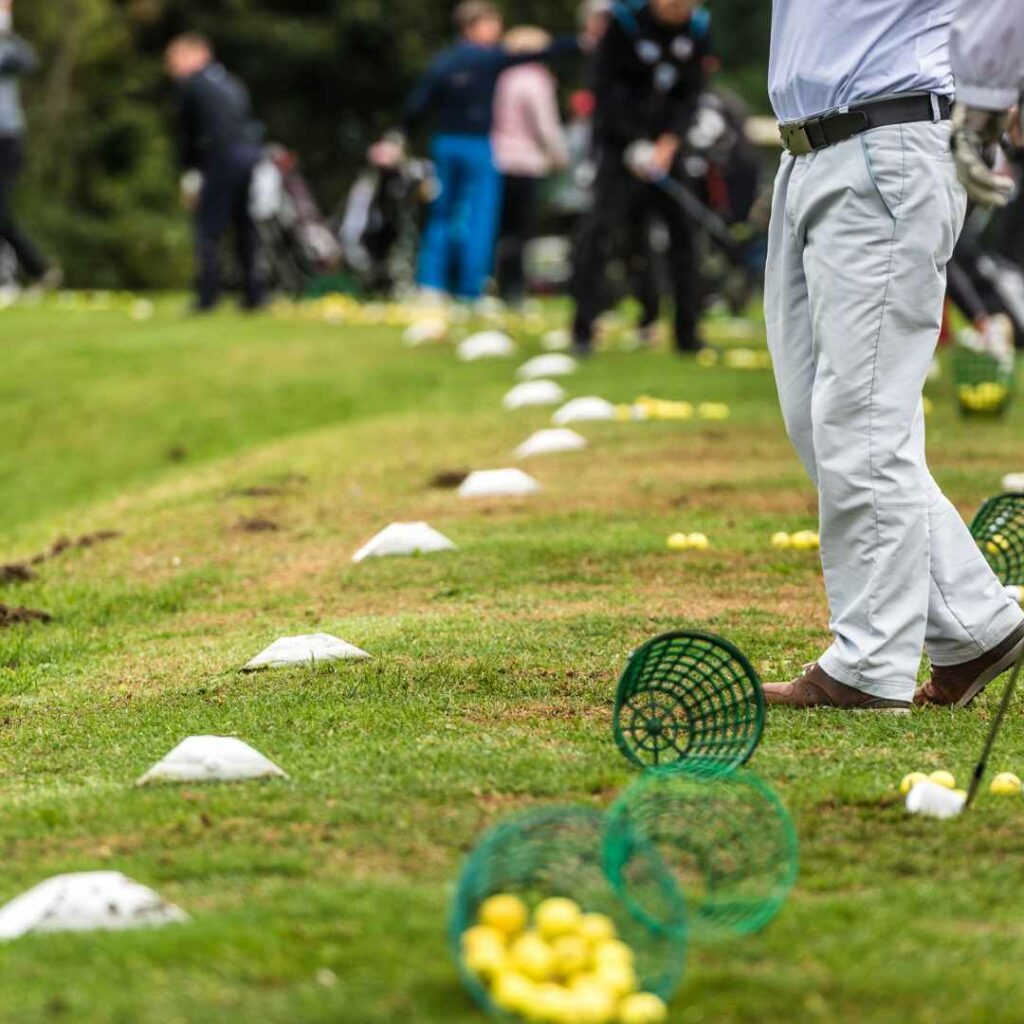
Ready to Take the Next Step? ⛳️
If you’re eager to dive deeper into golf’s intriguing world and master the ins and outs of the game, look no further than our “Golf For Beginners – The Ultimate Starter Guide.” Whether you’re a newbie or just brushing up on your skills, this online course has something for everyone.
⛳️ Discover the Ultimate Golf Starter Guide Right Here ⛳️
Conclusion on the 25 Best Golf tips for beginners
Congratulations! You’ve navigated through our comprehensive guide on golf tips for beginners. Remember, mastering golf is a continuous journey of improvement. Apply these tips, stay dedicated to your practice, and enjoy the evolving experience of becoming a skilled and confident golfer. Golf For Beginners Academy is here to support you every step of the way. Happy golfing!
Did You Like The 25 Best Golf Tips For Beginners?
If you want more detailed help with you game of golf, and specifically about the short game of golf, our partner-portal called World Of Short Game deliver great content for all short game related topics. Click here to visit World Of Short Game.
And if you live in Denmark, never hesitated to reach out to Danish Golf Academy for help with any part of your game.
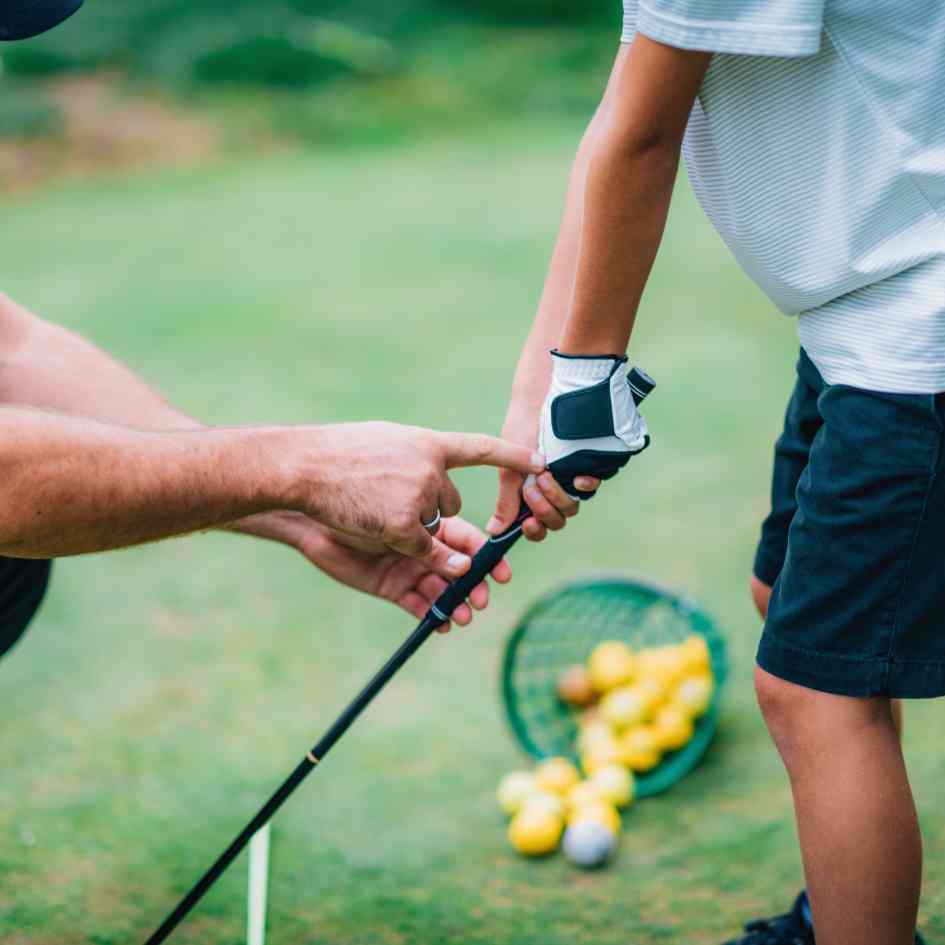
Mastering the Basics: How to Grip a Golf Club Correctly for Beginners
How to Grip a Golf Club Correctly for Beginners
Mastering the Basics
Welcome to Golf For Beginners Academy, where we’re committed to helping aspiring golfers like you tee off on the right foot! Today, we’re diving into a fundamental aspect of the game that every beginner needs to get a grip on – literally. In this guide, we’ll explore the art of holding a golf club correctly, ensuring you set the stage for a solid swing and an enjoyable golfing journey.
Understanding the Importance of a Proper Grip
The foundation of a successful golf swing starts with the grip. A correct grip not only influences your control over the club but also impacts the trajectory, accuracy, and power of your shots. So, let’s get started on the path to a great golf grip.
Getting a Hold of It – Step by Step:
Understanding the Basics: Before diving into the nitty-gritty, let’s establish the basics. The grip consists of the hands – the lead hand (left hand for right-handed golfers) and the trail hand (right hand for right-handed golfers).
Positioning the Lead Hand: Begin by placing the club in the fingers of your lead hand, not the palm. The handle should run diagonally across the fingers, with the grip extending from the base of your pinkie to the middle joint of your index finger. This creates the foundation for control and precision.
Adding the Trail Hand: With the lead hand in position, bring in the trail hand. Overlap the fingers of the trail hand with the spaces between the fingers of the lead hand. Ensure that both hands work together in harmony, fostering unity and control throughout your swing.
Checking Knuckle Alignment: A quick check to ensure you’re on the right track – your lead hand’s knuckles should be visible, forming a “V” with the thumb and index finger. This helps in creating a square clubface at impact.
Balancing Grip Pressure: Find the sweet spot when it comes to grip pressure. Too tight, and you risk tension in your swing; too loose, and control becomes elusive. Aim for a firm yet relaxed grip – think of holding a small bird; tight enough not to let it escape, but gentle enough not to harm it.
Common Mistakes to Avoid:
- Death Grip: Avoid squeezing the life out of the club. A relaxed grip promotes fluidity in your swing.
- Faulty Finger Placement: Ensure the handle runs through the fingers, not cradled in the palms.
- Inconsistent Hand Positioning: Maintain a consistent grip from shot to shot for stability and control.
Conclusion
Congratulations! You’ve just taken the first step toward mastering your golf game by learning how to grip a golf club correctly. Practice this fundamental skill consistently, and you’ll soon find yourself making more confident and controlled swings on the course. Stay tuned to Golf For Beginners Academy for more valuable insights to enhance your golfing journey. Happy swinging!
Ready to Take the Next Step? 
You’ve learned about the grip, good job! If you’re eager to dive deeper into golf’s intriguing world and master the ins and outs of the game, look no further than our “Golf For Beginners – The Ultimate Starter Guide.” Whether you’re a newbie or just brushing up on your skills, this online course has something for everyone.
⛳️ Discover the Ultimate Golf Starter Guide Right Here ⛳️

Learn How to Play Golf for Beginners
How to Play Golf for Beginners
A Comprehensive Guide
Welcome to Golf For Beginners Academy, your go-to resource for stepping into the world of golf. If you’re a beginner eager to learn how to play golf, you’ve come to the right place. In this detailed guide, we’ll take you through every aspect, from understanding the basics to stepping onto the course with confidence. Let’s tee off on this golfing journey!
Chapter 1: The Basics of Golf
Golf is a sport that combines precision, skill, and a touch of strategy. Before you dive into the intricacies, let’s establish a solid foundation with the basics:
Understanding the Golf Course: Familiarize yourself with the layout of a golf course – fairways, greens, hazards, and the tee box. Learn about par, which represents the number of strokes an expert golfer should take to complete the course or hole.
Golf Equipment Essentials: Get to know the basic golf equipment: clubs, balls, tees, and a golf bag. Each type of club serves a specific purpose, and understanding their roles is crucial for a beginner.

Chapter 2: Mastering the Golf Swing
The golf swing is at the heart of the game. Here’s a step-by-step guide to help you perfect your swing:
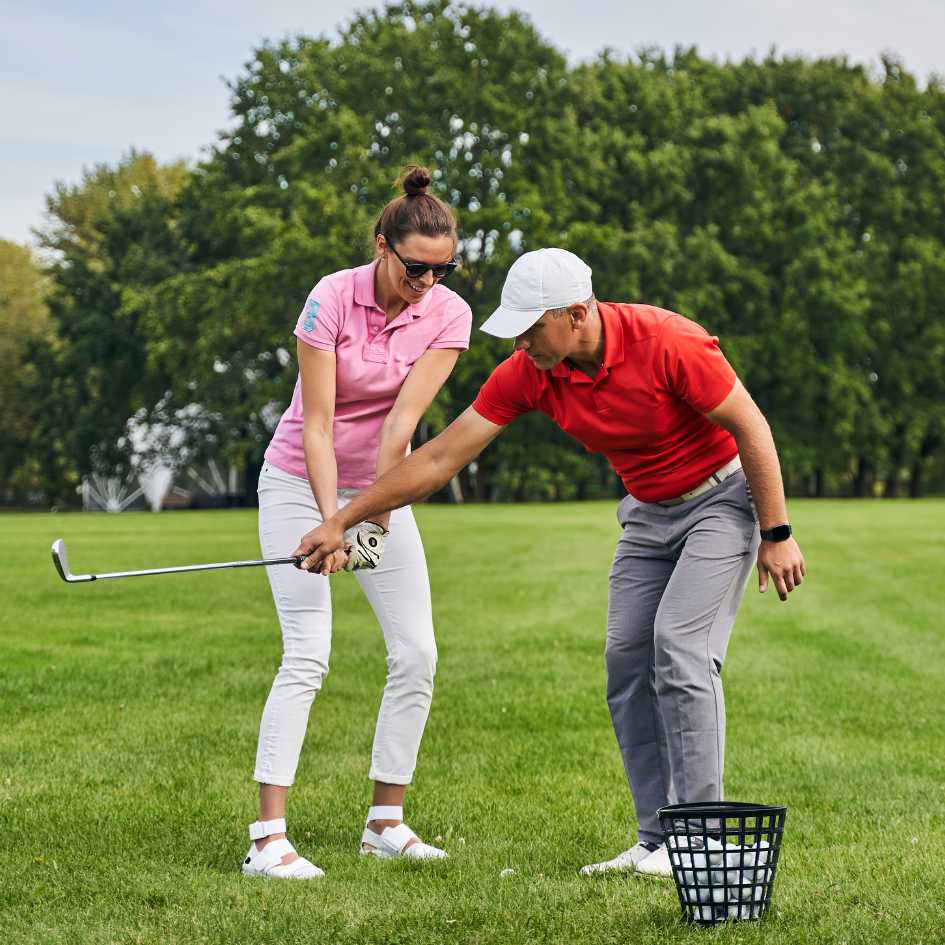
Grip Basics: Learn the correct way to hold the golf club. A proper grip sets the stage for a controlled and powerful swing.
Stance and Alignment: Achieve a balanced and consistent stance. Proper alignment ensures the ball goes where you intend it to.
The Golf Swing Motion: Break down the golf swing into backswing, downswing, and follow-through. Practice each phase to develop a smooth and efficient swing.
Understanding Ball Flight: Familiarize yourself with how different clubface positions and swing paths influence the direction and trajectory of the ball.
Chapter 3: Navigating the Short Game
The short game, including putting and chipping, is where precision truly matters. Let’s explore these critical aspects:
Putting Fundamentals: Master the art of putting by focusing on your grip, stance, and a smooth putting stroke. Distance control and accuracy are paramount on the green.
Chipping Techniques: Hone your chipping skills for shots around the green. Learn various techniques for different situations, including uphill and downhill lies.
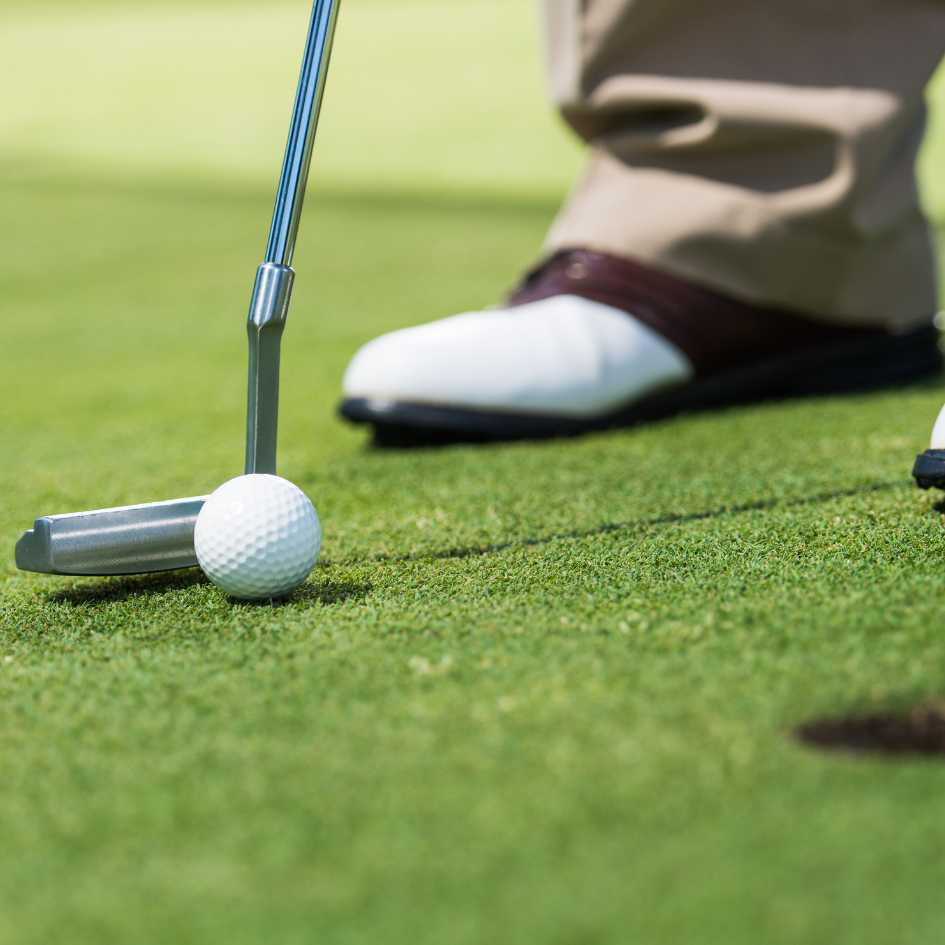
Chapter 4: Golf Etiquette and Rules
Understanding golf etiquette and rules is essential for an enjoyable and respectful experience on the course. Here’s what you need to know:

Golf Etiquette: Respect your fellow golfers by adhering to basic etiquette, such as maintaining a reasonable pace, keeping quiet during swings, and repairing divots.
Basic Golf Rules: Familiarize yourself with common golf rules, including penalty strokes, out-of-bounds, and drop procedures. Knowing the rules enhances the overall golfing experience.
Chapter 5: Taking Your Skills to the Course
Now that you’ve grasped the fundamentals, it’s time to transition from the practice range to the golf course:
Course Management: Develop a strategic approach to the course by understanding where to place shots, when to take risks, and how to manage different hole scenarios.
Playing with Others: Gain confidence in playing with others by understanding golf etiquette in a social setting. Learn how to keep pace and enjoy the camaraderie of the game.
Chapter 6: Continuous Improvement and Resources
Practice Routines: Establish effective practice routines to refine your skills consistently. Focus on specific aspects of your game, such as driving, iron play, and putting.
Golf Lessons and Resources: Consider taking golf lessons from a professional instructor. Additionally, leverage online resources, instructional videos, and golf publications to stay updated on tips and techniques.
Ready to learn more? ⛳️
If you’re eager to dive deeper into golf’s intriguing world and master the ins and outs of the game, look no further than our “Golf For Beginners – The Ultimate Starter Guide.” Whether you’re a newbie or just brushing up on your skills, this online course has something for everyone.
⛳️ Discover the Ultimate Golf Starter Guide Right Here ⛳️
Conclusion: Embark on Your Golfing Journey
Congratulations! You’ve completed our comprehensive guide on how to play golf for beginners. As you embark on your golfing journey, remember that improvement takes time and patience. Focus on continuous learning, practice, and most importantly, enjoy the game. Golf For Beginners Academy is here to support you every step of the way. Happy golfing!
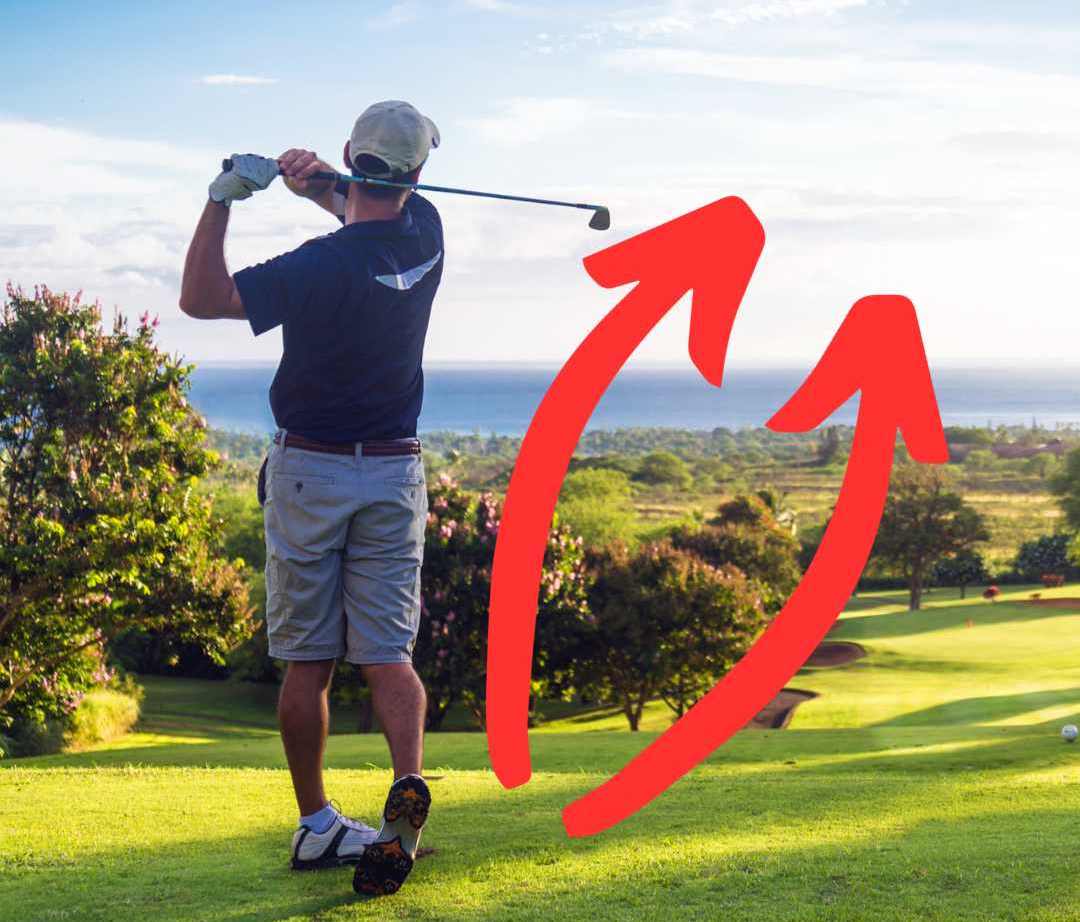
What’s the difference between a fade and a draw?
What's the difference between a fade and a draw?
The Art of Curving the Ball
Greetings, golf aficionados! If you’ve ever marveled at the magic of curving a golf ball in flight, you’ve likely heard of two terms: fade and draw. These are like the secret handshakes of golfers, allowing you to shape your shots with precision. This guide is your ticket to unraveling the mystery of fades and draws in a way that’s as enjoyable as sinking a birdie putt. So, grab your clubs, and let’s dive into the world of shot shaping in golf!
Meet the Fade and the Draw
Before we explore the techniques, let’s get to know our golfing buddies:
Fade: A fade is a shot that curves gently from left to right (for right-handed golfers) or right to left (for lefties). It’s like a controlled drift in the breeze.
Draw: On the other hand, a draw is a shot that curves slightly from right to left (for righties) or left to right (for left-handed golfers). It’s the art of making the ball dance.
The Fade: Sculpting the Sky
Grip Adjustment: To hit a fade, slightly weaken your grip. This means rotating both hands a bit to the left (for righties). It encourages an open clubface at impact.
Stance Alignment: Aim slightly left of your target (for righties) to accommodate the fade’s left-to-right curve.
Swing Path: Swing along your body line but slightly from outside to inside. This promotes a left-to-right spin on the ball.
The Draw: Painting the Fairway
Grip Adjustment: To create a draw, strengthen your grip slightly. This means rotating both hands a bit to the right (for righties). It encourages a closed clubface at impact.
Stance Alignment: Aim slightly right of your target (for righties) to allow for the draw’s right-to-left curve.
Swing Path: Swing along your body line, but this time, slightly from inside to outside. This imparts a right-to-left spin on the ball.
Hidden Gem: "Golf For Beginners - The Ultimate Starter Guide"
Ready to take your shot shaping skills to the next level? Our online course, “Golf For Beginners – The Ultimate Starter Guide,” delves deep into fades, draws, and so much more. Whether you’re just starting or aiming to refine your skills, this course is your gateway to golfing mastery. Eager to learn?
⛳️ Discover the Ultimate Golf Starter Guide Right Here ⛳️
Shape Your Game, Shape Your Destiny
Fades and draws are the strokes of artists on the golf course, allowing you to navigate around obstacles and make that ball dance to your tune. Whether you’re painting the sky with a fade or sculpting the fairway with a draw, these techniques add flair to your game. So, practice, experiment, and let the fairways become your canvas for golfing brilliance!
If you want more detailed help with you game of golf, and specifically about the short game of golf, our partner-portal called World Of Short Game deliver great content for all short game related topics. Click here to visit World Of Short Game.
And if you live in Denmark, never hesitated to reach out to Danish Golf Academy for help with any part of your game.

Golf Dictionary for Beginners: Mastering the Language of the Game
Golf Dictionary for Beginners
Mastering the Language of the Game - 55 Golf Terms
Welcome to the Golf Dictionary For Beginners! As you embark on your journey into this captivating sport, you might find yourself encountering a unique language that’s a blend of tradition, technique, and a touch of whimsy. Fear not, new golfers, for we’ve put together a comprehensive glossary of common golf terms to help you navigate the fairways and greens with confidence. From the “birdies” and “bogeys” to understanding the art of the “swing” and the intricacies of the “green,” this glossary is your trusty guide to speaking golf like a pro. So, let’s tee off and dive into the wonderful world of golf terminology!
55 Commonly used Golf Terms that Non-golfers Might Not be Familiar with
- Address: The stance taken by a golfer before swinging, positioning themselves over the ball.
- Albatross (Double Eagle): Scoring three strokes under par on a hole.
- Approach Shot: The shot played to the green from a distance, usually after the tee shot.
- Backspin: Spin applied to the ball that causes it to stop or roll backward when it lands.
- Birdie: Scoring one stroke under par on a hole.
- Bogey: Scoring one stroke over par on a hole.
- Bunker: A sand-filled hazard on the course, also known as a sand trap.
- Caddie: A person who carries a player’s clubs and assists during a round.
- Chip Shot: A short shot typically played around the greens.
- Divot: A piece of turf dug up by a golf club during a swing.
- Draw: A controlled shot that, for a right-handed golfer, curves slightly from right to left.
- Driver: The club used for tee shots, typically with the lowest loft.
- Eagle: Scoring two strokes under par on a hole.
- Fade: A shot that, for a right-handed golfer, curves slightly from left to right.
- Fairway: The cut grass area between the tee and the green.
- Flop Shot: A high, lofted shot used to clear an obstacle and stop quickly on the green.
- Fore: A warning shout to alert players of an incoming ball.
- Four-Ball: A match play format where two teams of two players compete, with each player playing their own ball.
- Gimme: A shot so close to the hole that it is considered unmissable, often conceded by opponents in casual play.
- Green: The area around the hole where putting takes place.
- Grip: The way a golfer holds the club.
- Handicap: A measure of a golfer’s skill level, used to create fair matches.
- Hazard: Any bunker or permanent water body, such as a lake or stream.
- Hook: A shot that curves dramatically from right to left (for right-handed players).
- Interlocking Grip: A type of grip where the pinkie finger of the trailing hand interlocks with the index finger of the leading hand.
- Iron: A type of golf club with a metal head, used for various distances.
- Knockdown Shot: A type of shot designed to have a lower trajectory, usually to combat strong winds.
- Lag Putt: A long putt aimed more at getting close to the hole rather than trying to make it.
- Lie: The position of the ball on the ground.
- Match Play: A scoring system where the game is played by holes rather than total strokes.
- Mulligan: A do-over shot, often informally allowed in casual play.
- Nassau: A type of wager in golf that is essentially three separate bets: front nine, back nine, and overall 18 holes.
- Out of Bounds: The area outside the defined boundaries of the course.
- Overclubbing: Using a club that will hit the ball further than necessary.
- Par: The expected number of strokes to complete a hole or the whole course.
- Pinch Shot: Similar to a chip shot but with a more downward strike, creating backspin.
- Pitch Shot: A high, short shot that lands softly on the green.
- Putter: A club designed for short, precise shots on the green.
- Quintuple Bogey: Scoring five strokes over par on a hole.
- Rough: The longer grass outside the fairway, making shots more challenging.
- Sand Trap: A hazard filled with sand or a “bunker.”
- Shank: A poorly struck shot where the ball hits the hosel of the club and veers sharply to the right.
- Slice: A shot that curves dramatically from left to right (for right-handed players).
- Stance: The position of a golfer’s feet before taking a shot.
- Swing: The motion used to hit the golf ball.
- Tee: The small peg used to elevate the ball for the first shot of a hole.
- Tee Box: The area where players start each hole.
- Top: A shot where the clubhead contacts the top of the ball, resulting in a low, short shot.
- Triple Bogey: Scoring three strokes over par on a hole.
- Up and Down: Getting the ball into the hole in two strokes from off the green, typically one chip and one putt.
- Vardon Grip (Overlap Grip): A common type of grip where the pinkie finger of the trailing hand overlaps the index finger of the leading hand.
- Water Hazard: A hazard filled with water, like a pond or stream.
- Wedge: A type of golf club with a high loft, used for short, high shots.
- Whiff: Swinging and missing the ball completely.
- Yardage: The distance from a specific point to the target, usually measured in yards.
Ready to Take the Plunge? ⛳️
You’ve learned about birdies, eagles, bogeys, and bunkers – the delightful quirks that make golf the dynamic sport it is. If you’re eager to dive deeper into golf’s intriguing world and master the ins and outs of the game, look no further than our “Golf For Beginners – The Ultimate Starter Guide.” Whether you’re a newbie or just brushing up on your skills, this online course has something for everyone.
⛳️ Discover the Ultimate Golf Starter Guide Right Here ⛳️
Did you like the Golf Dictionary for Beginners?
If you want more detailed help with you game of golf, and specifically about the short game of golf, our partner-portal called World Of Short Game deliver great content for all short game related topics. Click here to visit World Of Short Game.
And if you live in Denmark, never hesitated to reach out to Danish Golf Academy for help with any part of your game.
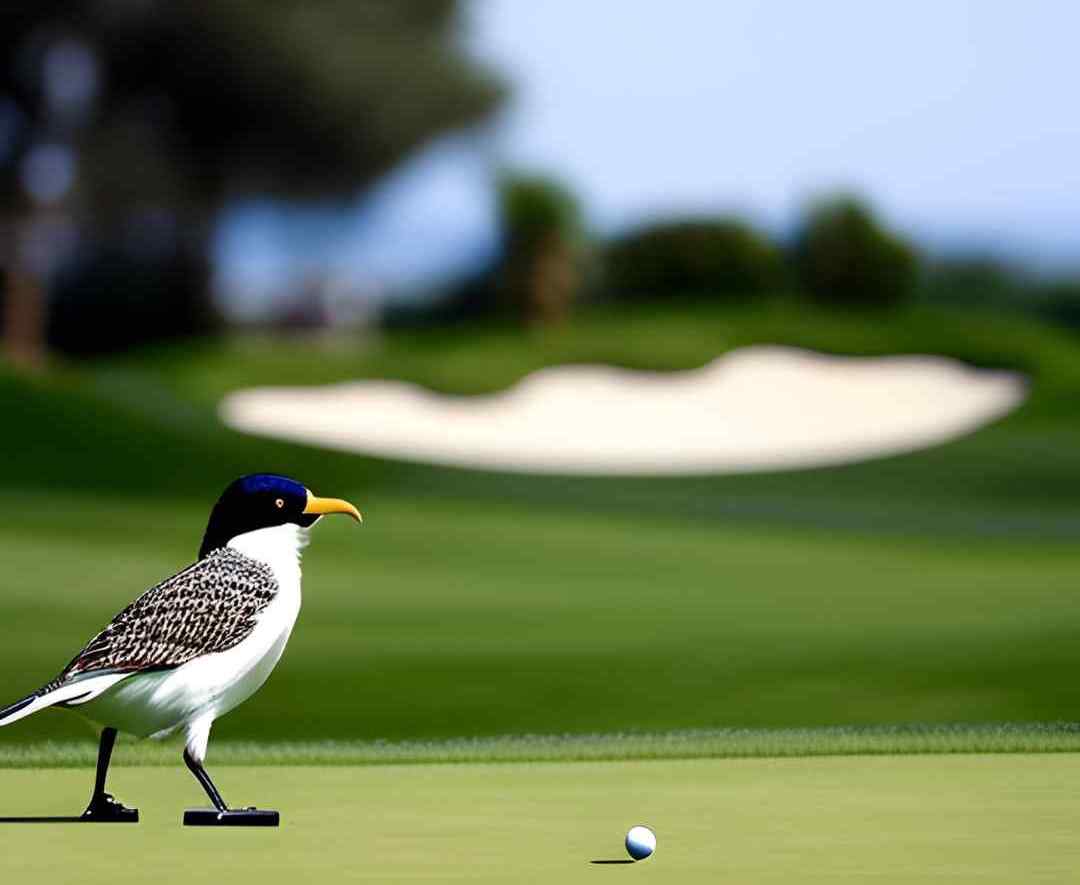
What Is a Birdie in Golf? Explained Simply
What Is a Birdie in Golf? Explained Simply
Decoding Golf's Feathered Friends: Birdies, Eagles, Albatross, and More
Are you wondering: What is a birdie in golf?
Calling all golf enthusiasts and newcomers to the fairways! If the world of golf terminology has left you feeling like you’re in a maze, fear not. We’re here to unravel the mysteries of those fascinating yet puzzling terms like birdies, eagles, albatross, bogeys, and double bogeys. So, grab your virtual caddie and let’s embark on a journey of golfing language, spiced with a dash of fun and a sprinkling of knowledge. Plus, keep an eagle eye out for a special surprise hidden within!
Birdies: The Feathered Triumphs
Let’s start with the star of the show – the birdie. Picture this: you’re on the golf course, standing over a putt, and you sink it in one less stroke than the designated par for that hole. That, my friend, is a birdie! It’s like finding a nugget of gold in the rough. The euphoria of achieving this feat is unmatched. Consider it a high-five from the golf gods!

Eagles: Soaring to New Heights

If a birdie is a small victory, then an eagle is like spreading your wings and taking flight. An eagle is when you complete a hole in two strokes less than its par. So, if the hole is a par-5, and you conquer it in just three strokes, you’ve scored an eagle. Imagine the elation of pulling off that near-magical play – it’s golf’s version of flying high!
Albatross: The Rare Avian Marvel
Ready for a bird of a different feather? Meet the albatross, one of golf’s rarest achievements. This majestic feat occurs when you complete a hole in three strokes less than its par. In simpler terms, if you conquer a par-5 hole in just two strokes, you’ve landed an albatross. It’s like spotting a mythical creature on the course, and it’s as glorious as it sounds.

Bogeys and Double Bogeys: The Friendly Flubs

Now, not every stroke is going to be a triumphant one. A bogey is when you take one stroke more than the par score on a hole. Think of it as a friendly reminder that even the pros have their off days. And then there’s the double bogey – two strokes over par. While it might not be cause for celebration, it’s all part of the learning curve in the world of golf.
Ready to Take the Plunge? ⛳️
You’ve learned about birdies, eagles, albatross, bogeys, and double bogeys – the delightful quirks that make golf the dynamic sport it is. If you’re eager to dive deeper into golf’s intriguing world and master the ins and outs of the game, look no further than our “Golf For Beginners – The Ultimate Starter Guide.” Whether you’re a newbie or just brushing up on your skills, this online course has something for everyone.
⛳️ Discover the Ultimate Golf Starter Guide Right Here ⛳️
Conclusion on What Is a Birdie in Golf?
And there you have it, the colorful cast of characters that make up golf’s unique lexicon! From the joy of a birdie to the majesty of an eagle or an albatross, and even the occasional humbling bogey or double bogey, golf’s language tells a story of triumphs and learning curves. So, gear up, grab your clubs, and don’t forget to explore our “Golf For Beginners – The Ultimate Starter Guide.” The fairways are calling, and there’s a world of exciting possibilities waiting for you to tee off!
Let’s swing into action and add your own chapter to the wonderful tale of golf. ⛳️
Did you like "What Is a Birdie in Golf"?
If you want more detailed help with you game of golf, and specifically about the short game of golf, our partner-portal called World Of Short Game deliver great content for all short game related topics. Click here to visit World Of Short Game.
And if you live in Denmark, never hesitated to reach out to Danish Golf Academy for help with any part of your game.
Recent Comments
Copyright @ 2024 - Golf For Beginners Academy

